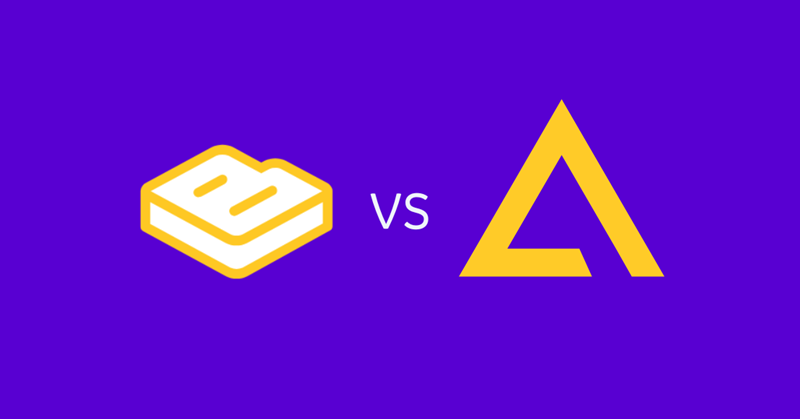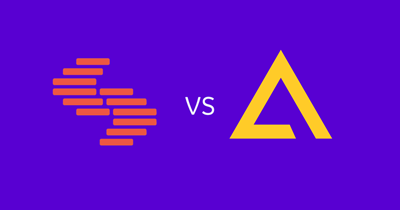Butter CMS vs Agility CMS

Selecting the right Content Management System (CMS) is a critical decision that can significantly impact your digital content strategy. In this comprehensive comparison, we'll take a close look at two popular CMS options – Agility CMS and Butter CMS – to help you navigate their features, strengths, and potential challenges.
What is Agility CMS?
Agility CMS is a dynamic content management system designed to cater to the evolving needs of modern businesses. With a focus on empowering developers and marketers, Agility CMS offers a user-friendly interface for content creation, while its headless architecture enables seamless content delivery across various platforms.
The platform's flexibility, scalability, and extensive API capabilities make it a versatile solution for enterprises seeking to enhance digital experiences. Whether it's managing content, personalizing user interactions, or ensuring global scalability, Agility CMS is equipped to support businesses in crafting compelling digital journeys.
What is Butter CMS?
Butter CMS is a headless content management system (CMS) designed to simplify content management and delivery for developers and marketers. It provides a user-friendly interface for content creation, editing, and organization, allowing developers to integrate content seamlessly into various applications and websites using its APIs.
Butter CMS, while offering valuable content management features, does come with some potential limitations and challenges. Users have reported various issues that can impact their experience:
Search Feature and Blog Display:
Some users have noted that the search feature within Butter CMS could be improved, and the way past blog posts are displayed might need enhancement for better usability.
Customer Support:
While Butter CMS provides customer support, there have been instances where users found it did not fully meet their needs.
API Requests and Timeout:
Users have reported cases where API requests experience timeouts, and in certain situations, API request bodies do not return the correct data if something is in draft mode.
Limited Environments:
Some users have expressed a desire for the ability to create and manage multiple environments within Butter CMS.
Advanced Features and Pricing:
Butter CMS has been perceived to have a limited feature set compared to other content management systems, and its pricing might be considered expensive for the range of functionalities it offers.
Content Duplication and Localization:
Content duplication, particularly for global businesses dealing with multiple markets and locales, has been identified as a challenge, making organization complex. The lack of support for localizing blog content has also been highlighted as a drawback.
Content Migration and Access Control:
Users have reported issues with content migration between sites and have indicated that the platform's granular access control could be improved.
Add-ons and Plugins:
Some users have expressed the need for more third-party add-ons or a marketplace of plugins to extend the capabilities of Butter CMS, such as SEO plugins or digital asset management tools.
While Butter CMS provides a range of features, users should consider these potential limitations and challenges when evaluating the platform for their content management needs.
Agility CMS vs. Butter CMS: A Comprehensive Comparison
When it comes to Content Management Systems (CMS), Agility CMS and Butter CMS are two prominent players offering distinct features and benefits. In this detailed comparison, we'll dive into the strengths and limitations of each platform to help you make an informed decision for your content management needs.
Target Audience:
Agility CMS is designed to cater to the needs of enterprises and projects with complex content requirements. It excels in handling intricate content scenarios, making it a go-to choice for large-scale endeavours. On the other hand, Butter CMS leans towards simplicity, making it ideal for users seeking an easy and straightforward CMS solution.
Scalability:
Agility CMS boasts a cloud-based infrastructure that provides high scalability, ensuring smooth performance regardless of geographical locations and traffic spikes. This makes it well-suited for projects that demand scalability and flexibility. Meanwhile, Butter CMS is better suited for smaller to mid-sized sites, as its offerings are tailored to less resource-intensive requirements.
Content Modeling:
Agility CMS offers an adaptable and highly customizable content modeling system, allowing businesses to create intricate content structures that align with their needs. In contrast, Butter CMS prioritizes simplicity in content modeling, making it user-friendly for those new to content management.
Multilingual Support:
Agility CMS shines when it comes to managing multilingual content. It provides a comprehensive translation interface and supports efficient content translation across various languages. Butter CMS, however, has limited localization capabilities, which might concern businesses targeting global audiences.
API Capabilities:
Agility CMS provides an extensive suite of APIs covering various tasks, including content management and delivery. This offers developers the tools to create, manage, and deliver content effectively across different platforms. In contrast, Butter CMS focuses primarily on content management APIs.
Customization:
If customization is a priority, Agility CMS offers many options for enterprises with diverse and complex requirements. Butter CMS, while user-friendly, provides more simplified customization options, which may not suit organizations with intricate needs.
User-Friendly Interface:
Agility CMS strikes a balance between catering to both technical and non-technical users. Its interface is designed to empower marketers and content creators without sacrificing the technical capabilities that developers require. Butter CMS is known for its straightforward and easy-to-use interface, which suits those who value simplicity.
Content Personalization:
Agility CMS empowers marketers to personalize content to cater to different user segments, enhancing engagement. Butter CMS offers more limited personalization capabilities, which might be sufficient for smaller sites with basic needs.
Support and Service:
Agility CMS is known for its comprehensive customer support, including a white glove service that sets high standards for addressing queries and resolving issues promptly. Butter CMS has mixed reviews regarding its customer support experiences, which could be a consideration depending on your project's demands.
Content Migration:
Both platforms offer satisfactory content migration features. However, it's worth noting that while Agility CMS ensures a smooth content migration process, some users have reported challenges with data migration when using Butter CMS.
Advanced Features and Environment Management:
Agility CMS shines with its rich feature set designed to meet the demands of enterprises. It excels in handling complex content scenarios and offers strong environment management capabilities. In comparison, Butter CMS might have limitations for projects with advanced features and complex needs, making it more suitable for straightforward projects.
Deciding Between the Two:
Choosing between Agility CMS and Butter CMS depends on your organization's requirements. If you're looking for a robust solution for complex enterprise projects with scalability, advanced features, and multilingual support, Agility CMS is a strong contender. However, Butter CMS might be the right fit if you have smaller content management needs. Evaluate your project's complexity, customization needs, and user-friendliness preferences to make the best choice for your content management journey.

